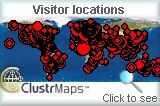Mobile Active Convergence: September 2005
The cell phone is increasingly becoming the most important communication tool used by the general public all over the world. The mobile nature of the phones along with the rich voice and data connections have become an invaluable part of youth and business culture.
As with all previous leaps in technology, cell phones are used to empower organizing efforts (just like early campaigns using printed materials, TV, radio, fax, email, web, etc.). The time has come to recognize the power of the cell phone as an organizing and campaign communication tool.
A handful of visionaries and activists are convening a working session of global activists, communications staff, technology experts and foundation staff to exchange a wide variety of experience, expertise and vision.
The goal is to shorten the learning curve and accelerate the use of cell phones as a successful tool in campaigns, human rights efforts and field organizing.
The "MobileActive" convergence will develop new guides for campaign planners, communications staff and technology staff. Case studies from the field will be explored and a short list of recommendations will be developed for funders interested in supporting campaigns and issue organizing that use mobile phones as an engagement tool. Participants will be invited from across the world including Africa, South Korea, the Philippines, India, the Ukraine, and the Americas.
There are unique characteristics of cell phone communications. There are emerging norms and language nuances. For campaign organizers, there are technical hurdles and questions about using the tool for one-to-many message delivery. For communicators, there are challenges to crafting messages that work in a sms, text message or voice appeals. In spite of these challenges, a growing body of evidence suggests that under some conditions, the cell phone are a powerful new tool in the hands of civil society organizations, organizers, and activist.
There is still much to learn about potential, costs, and actual returns on the use of cell phones in a campaign and advocacy context. Campaign planners, technology providers and funders need to understand ways to use the wireless infrastructure for advocacy communications and organizing.
Objectives
- Reduce sector costs of learning and experimenting with the use of cell phones in advocacy and campaign contexts.
- Find advantages cell phones provide campaigns and accelerate organizing among allied groups.
- Detail best practices for the use of cell phones as a communications tool by organizers and operatives in the field.
- Hone strategies and tactics used in supporting campaigns that deploy a cell phone based communications efforts in advocacy efforts.
- Design new ways for the advocacy community to best capitalize on wireless phone infrastructure.
A successful completion of the project will mean that organizers will have better understanding of how to use this powerful channel of communications essential to the success of future campaigns. The groups working to adapt cell phone use into organizing efforts will have reduced overhead costs (shorter learning cycle). The barriers to adapting cell phone based campaign strategies will be identified and addressed. The project will produce be experience based guidance on ways to communicate through the fastest growing communications pipeline in modern culture. Finally, there will be some unified sector-wide technical knowledge of the ways cell phone campaigns are managed and implemented.

